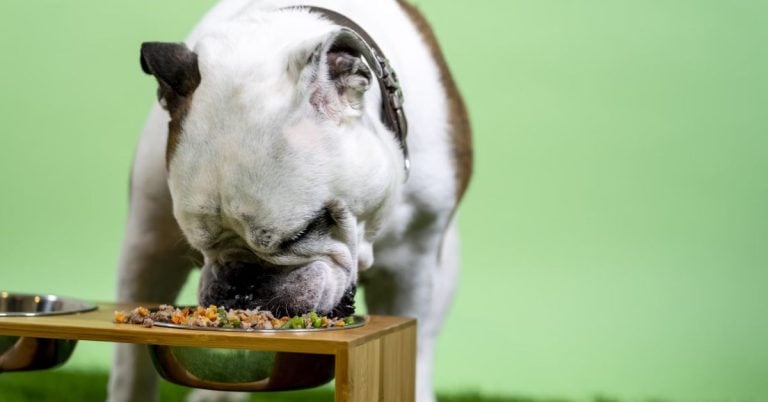These 17 Adorable Dog Breeds Are Actually Genetic Disasters—Because of Us
It’s no secret that dogs are man’s best friend—but sometimes, man isn’t always the best friend in return. Over the years, certain dog breeds have been pushed, pulled, and reshaped to meet human desires.
Whether it’s a flatter face, a smaller size, or a more “marketable” look, selective breeding has left some of the world’s most beloved breeds a shadow of their original selves.
What began as a way to enhance working traits or companionship qualities has, in many cases, gone way too far.
Behind those puppy-dog eyes and wagging tails are heartbreaking health issues, shortened lifespans, and chronic pain—all because we wanted cuter, smaller, fluffier, or more Instagrammable dogs.
From the snorting, wheezing struggles of flat-faced breeds to the joint and spine issues plaguing long-bodied or giant-sized dogs, the cost of overbreeding is very real.
Some pups can no longer give birth naturally, breathe freely, or run without pain. And yet, many of these breeds remain massively popular, their genetic issues hidden behind those sweet expressions and charming personalities.
This isn’t about blaming the breeds—it’s about understanding how our preferences have steered their evolution in ways that aren’t always kind.
Many of these dogs are still loving, loyal companions who deserve all the care and comfort we can offer. But they also serve as a reminder: when popularity outweighs preservation, the consequences often show up in the vet’s office.
In this article, we’re taking a closer look at 17 popular dog breeds that have been heavily affected by overbreeding.
Some were working dogs now plagued by disease. Others were companions shrunk or stretched for aesthetics. All have stories that deserve to be told—because loving dogs means loving them responsibly.
1. English Bulldog
Once a symbol of strength and tenacity, the English Bulldog has been reshaped into a dog that struggles just to breathe.
Their signature squashed face may be endearing, but it comes with a devastating cost—brachycephalic airway syndrome. Many Bulldogs snore, wheeze, and overheat easily, often requiring surgery just to open their airways.
On top of that, their stocky build and short legs make natural birth nearly impossible. Most are delivered by C-section, and joint problems are practically guaranteed.
These dogs used to be athletic and agile—now, they can barely go for a walk in warm weather. What we’ve done in pursuit of “cute” has left them with a lifetime of medical issues, short lifespans, and a constant struggle to just be comfortable.
2. German Shepherd
Originally bred as working dogs with unmatched strength, agility, and intelligence, German Shepherds have long been admired for their versatility.
But decades of breeding for exaggerated sloped backs and angulated hind legs have introduced painful consequences. Many now suffer from hip and elbow dysplasia, spinal issues, and arthritis before they’re even middle-aged.
This isn’t just about looks—it affects quality of life. Dogs bred with extreme conformation may walk with a wobble, tire easily, or avoid movement altogether.
It’s heartbreaking to see such a noble breed—once a symbol of courage and functionality—reduced to limited mobility and chronic discomfort.
While well-bred Shepherds still exist, many popular lines today are a far cry from the original robust herders they once were.
3. Pug
Those big, round eyes and smooshed little noses make Pugs irresistibly cute—but also dangerously unhealthy.
Their short snouts cause severe breathing problems, often requiring surgery just so they can get enough air. Many struggle with overheating and can’t even enjoy a short walk on a warm day.
Their bulging eyes are prone to ulcers and injury, while their tightly curled tails can be linked to spinal malformations.
Pugs once had slightly longer snouts and fewer health problems, but we’ve bred them into a state of chronic discomfort. What’s worse, many owners don’t recognize their snorting and gasping as medical red flags—because it’s become “normal.”
4. Cavalier King Charles Spaniel
Bred for companionship and elegance, the Cavalier King Charles Spaniel is royalty in the dog world—but their genetics are far from pristine.
One of the most heartbreaking issues is syringomyelia, a painful condition where the skull is too small for the brain. It causes severe neurological symptoms and constant head pain.
These dogs are also highly prone to heart disease, with many suffering from mitral valve issues early in life. Their delicate build and signature dome-shaped skulls may look precious, but they often mask a lifetime of discomfort.
Despite their sweet, gentle nature, the breed is plagued by health complications that have turned this lapdog into a ticking time bomb.
5. Dachshund
Dachshunds are adorable with their long bodies and stubby legs—but their unique shape has led to widespread spinal issues.
Intervertebral disc disease (IVDD) is common, often causing partial or full paralysis with just one wrong jump off the couch. Many require costly surgery or lifelong mobility aids.
Once bred for agility in badger hunts, today’s Dachshunds have been stretched beyond what their spines can handle. Their exaggerated proportions make everyday activities risky, and many owners must dog-proof their homes to avoid injury.
This beloved breed’s signature look may be charming, but it’s come at a significant physical cost.
6. Labrador Retriever
America’s favorite family dog hasn’t been spared by overbreeding. Labradors are now frequently plagued by obesity, joint issues, and behavioral changes—particularly in poorly bred lines.
Their high energy and appetite make them prone to overeating and weight-related health complications like diabetes and arthritis.
Overbreeding has also led to a split between “field” and “show” lines, creating inconsistency in temperament and health.
Some Labradors today are overly anxious, hyperactive, or lack the working drive they were originally prized for. The result? A breed that’s everywhere, but not always thriving the way it once did.
7. Golden Retriever
Golden Retrievers are the poster dogs for loyalty and warmth, but they’re also one of the most cancer-prone breeds in the world.
Overbreeding has made conditions like lymphoma and hemangiosarcoma all too common, with nearly 60% facing cancer in their lifetime.
Beyond that, they’re prone to hip dysplasia, allergies, and heart problems. The surge in demand for their friendly, family-oriented personality has encouraged breeders to focus on appearance over health.
Golden Retrievers were once sturdy sporting dogs; now, too many are born with fragile immune systems and shortened lifespans. Loving one often means preparing for heartbreak far too soon.
8. French Bulldog
French Bulldogs have skyrocketed in popularity—but their rise has come with serious health consequences. With their flat faces and compact airways, many suffer from brachycephalic obstructive airway syndrome (BOAS).
Snorting, snoring, and even fainting spells are common, especially in warm weather.
Worse yet, many Frenchies can’t give birth naturally due to their body structure. Most litters are delivered by C-section, and spinal deformities are frequently found due to their tightly coiled tails.
These dogs are often sweet and loyal, but they’ve been bred into bodies that can barely function. Their high demand has only fueled the cycle.
9. Chihuahua
Tiny and full of personality, Chihuahuas have been overbred into extremes—often to the point of fragility. Their miniature frames are vulnerable to injury, and dental issues are nearly guaranteed thanks to their undersized jaws.
The demand for purse-sized pups has led to poor breeding practices that favor size over stability. Some Chihuahuas are plagued by hydrocephalus, or “water on the brain,” due to their unnaturally small skulls.
Despite their bold attitudes, many struggle with chronic anxiety, joint problems, and genetic disorders that go far beyond their big-dog energy.
10. Shih Tzu
Bred to be royal lapdogs, today’s Shih Tzus are a far cry from their original, hardier ancestors. Their exaggeratedly flat faces make breathing a chore, especially in hot or humid conditions. Many develop snoring issues, eye injuries, or collapsed nostrils.
Their long coats, bred for showy elegance, often require constant grooming and can hide skin infections or parasites if neglected.
Add to that dental overcrowding and spinal problems, and you’ve got a dog whose looks have taken clear priority over function. While sweet and affectionate, the modern Shih Tzu is often living a life of hidden struggle.
11. Boxer
Once known for being tough, athletic protectors, Boxers have become one of the most medically fragile large breeds around.
Overbreeding has led to alarmingly high rates of cancer—especially lymphoma and mast cell tumors—as well as heart conditions like cardiomyopathy.
Their flat muzzles also make them prone to breathing difficulties and overheating. Boxers today often lack the stamina and durability of their predecessors.
It’s a heartbreaking shift from resilient working dogs to a breed that many owners lose far too young. Their loyal and goofy personalities deserve better than the shortened, struggle-filled lives they’ve come to know.
12. Yorkshire Terrier
Yorkies were once tough little ratters, but modern breeding has turned them into delicate accessories.
Their petite frames and fragile bones make them prone to injury, especially when mishandled. Dental decay is rampant, and many suffer from collapsing tracheas that make breathing difficult.
Some breeders go even further with “teacup” versions, which often experience neurological problems, underdeveloped organs, and shortened lifespans.
Their bold personalities are still intact, but their bodies aren’t built to back them up anymore. In trying to make them “cuter,” we’ve stripped them of much of their resilience.
13. Shar Pei
Famous for their wrinkly folds and somber expressions, Shar Peis have suffered immensely from selective breeding.
Those deep skin rolls aren’t just for show—they often trap moisture and bacteria, causing painful infections and chronic skin conditions.
Additionally, many Shar Peis suffer from entropion, a condition where their eyelids roll inward and scratch the cornea.
Their stocky build can contribute to joint problems, and their unique genes put them at risk for Shar Pei fever, an autoinflammatory disorder. Once sturdy guard dogs, modern Shar Peis are often prisoners in their own skin.
14. Dalmatian
Dalmatians have always been striking with their unique spots—but their beauty hides some serious genetic baggage.
Roughly 30% are born deaf in one or both ears due to a lack of melanocytes in their inner ears, a consequence of the gene responsible for their iconic coat.
On top of that, they’re prone to urinary tract issues, especially the formation of painful bladder stones. Behaviorally, Dalmatians can be highly energetic and reactive, which clashes with the calm companion image many expect.
Overbreeding to meet “101 Dalmatians”-fueled demand did this breed no favors—it created fragile dogs often misunderstood by the families who bring them home.
15. Mastiff
Majestic and imposing, Mastiffs were once dependable working giants. But modern breeding has turned them into overly large, sluggish dogs plagued by joint issues and heart problems.
Their sheer size puts constant pressure on their hips, knees, and elbows—leading to early arthritis and limited mobility.
Bloat, or gastric torsion, is another common concern, and it can be fatal if not treated immediately.
These gentle giants often live short lives, rarely exceeding 7 years. In trying to make them bigger and more impressive, we’ve compromised their strength, stamina, and overall health.
16. Great Dane
Often called the “Apollo of dogs,” Great Danes are regal and affectionate—but their enormous size comes at a heavy cost.
Their lifespan is tragically short, with many passing away before age 8. Heart disease, joint degeneration, and bloat are constant threats.
Overbreeding has emphasized their towering height while neglecting internal stability. Their bones and organs struggle to support their frame, leading to arthritis, lameness, and fatigue.
While they remain loyal and gentle companions, their health issues are so common it’s not a matter of “if,” but “when.” It’s a sobering tradeoff for anyone enchanted by their giant charm.
17. Boston Terrier
With their tuxedo coats and charming expressions, Boston Terriers are irresistible—but they suffer from the same flat-face curse as their brachycephalic cousins.
Breeding for exaggerated skulls has caused respiratory issues, overheating, and excessive snorting and snoring.
Their prominent eyes are vulnerable to injury and infection, and their small frames can come with spine and joint concerns. The original Boston Terrier was a sturdier, more balanced breed.
Today’s version struggles with the basics—like breathing comfortably or regulating body temperature. Their sweet personality still shines through, but it’s often buried under layers of genetic strain.























